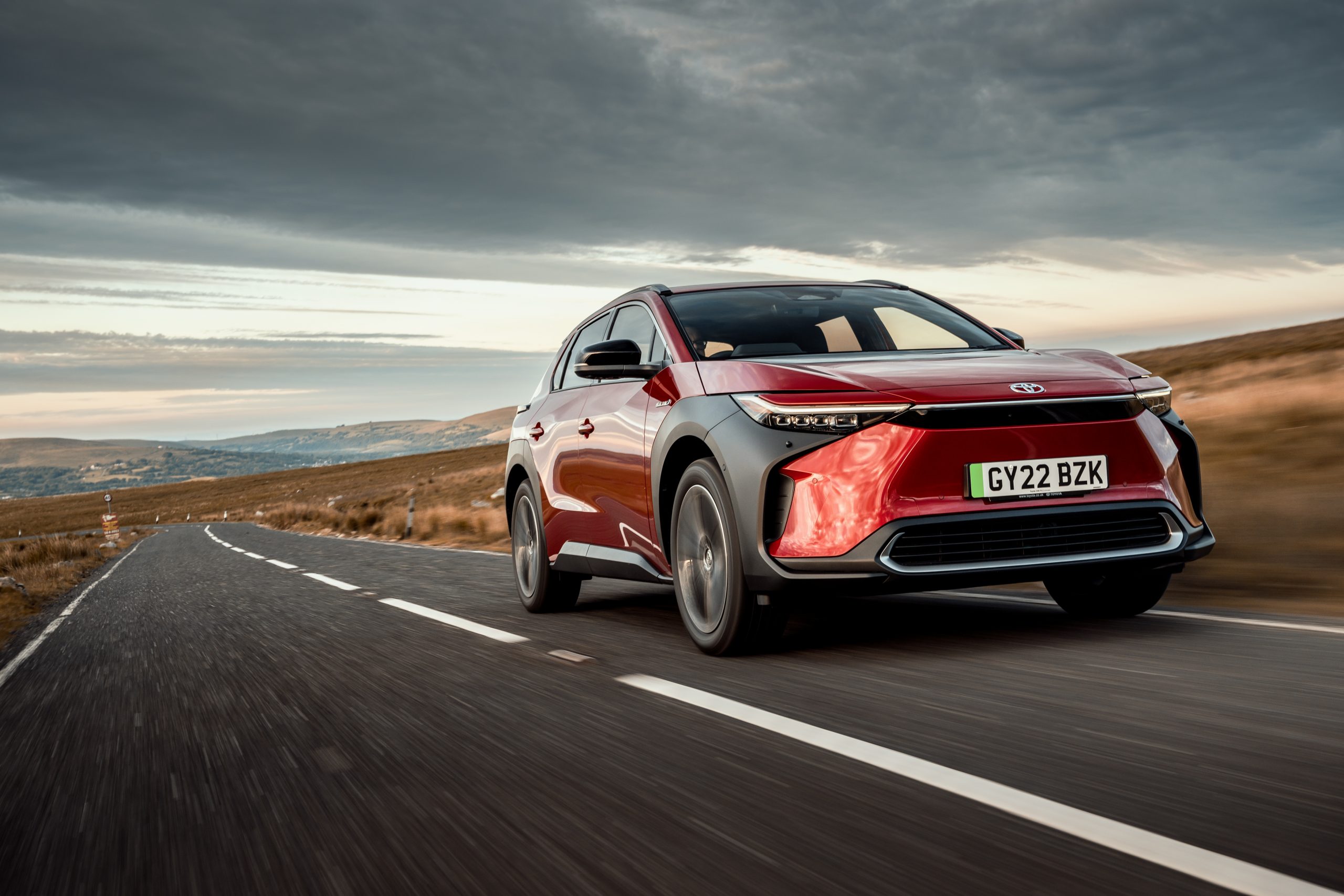The bZ4X is a new breed for the Japanese firm and is built in conjunction with Subaru, but is it any good? Cameron Richards finds out.
What is it?
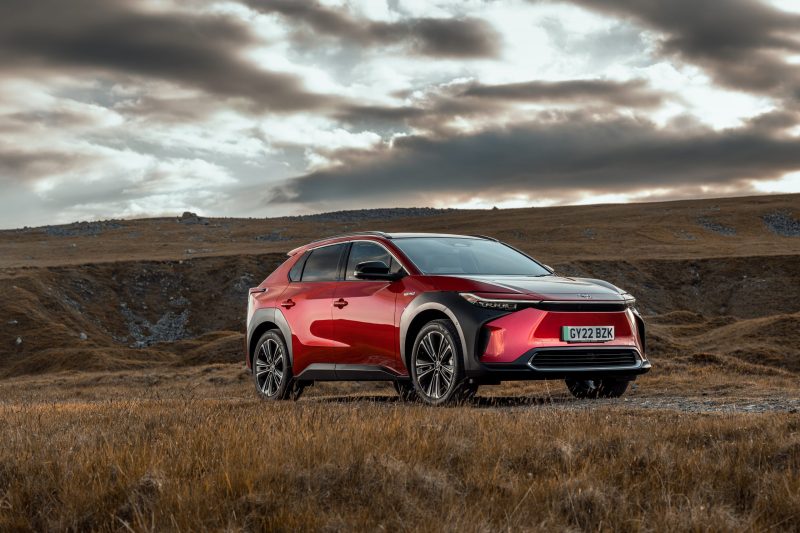
The acronym bZ4X stands for ‘Beyond Zero four X (Crossover) and it’s Toyota’s first swing into the global battery electric car market.
Underneath its skin, you’ll find the same platform and mechanicals as the Subaru Solterra SUV.
This new model is competing in the forever-expanding world of electric crossovers, but is the firm too late to join the overcrowded party? Let’s find out.
What’s new?
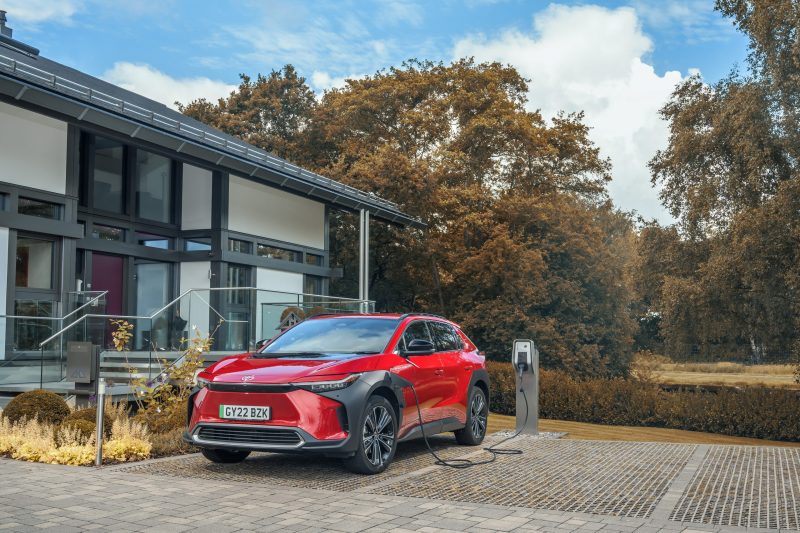
It’s not an uncommon site these days for a car manufacturer to introduce an EV into the SUV market. However, the bZ4X is a completely new model to join the Toyota line-up.
Its chassis, body, interior, drivetrain and electric platform are new, with the car being the first chapter into the Japanese giant’s route into its decarbonisation plan with electric, hybrid and hydrogen technology.
It may be the first global electric car for Toyota, but, rewind back to the late 90s and early 2010s, and the firm produced electric versions of the first and third generations of RAV4 that were sold exclusively in California – so it isn’t entirely new territory.
What’s under the bonnet?
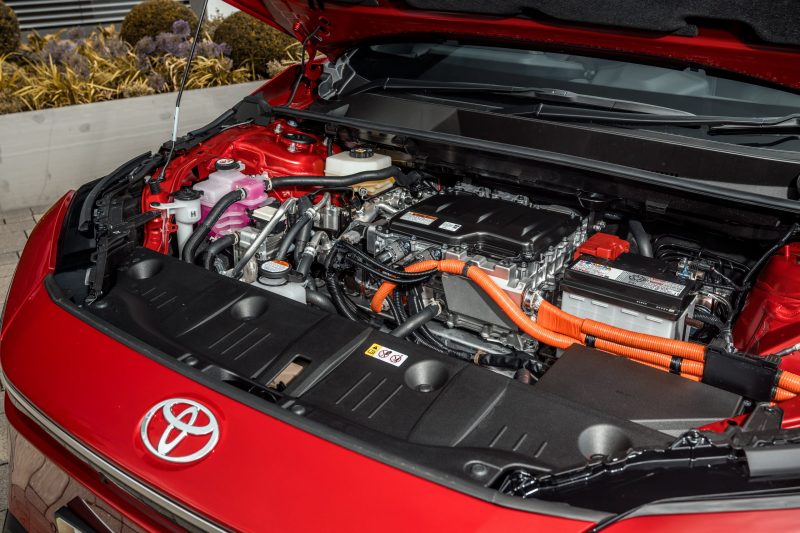
We’re testing the entry-level Pure model which features a 71.4kWh battery pack and is front-wheel-drive.
The electric motor produces a total of 207bhp and 266Nm of torque. In terms of acceleration, this big SUV can do 0-60mph in 7.3 seconds and has a top speed of 99mph.
With the electric range, our test car can do a claimed 270 miles between trips to the plug and DC rapid charging is compatible, taking around half an hour to go from 10 to 80 per cent when you’re connected to a suitably rapid charger. Slower AC charging from a wallbox at home will take around 9.5 hours to 100 per cent fully charge the bZ4X.
What’s it like to drive?
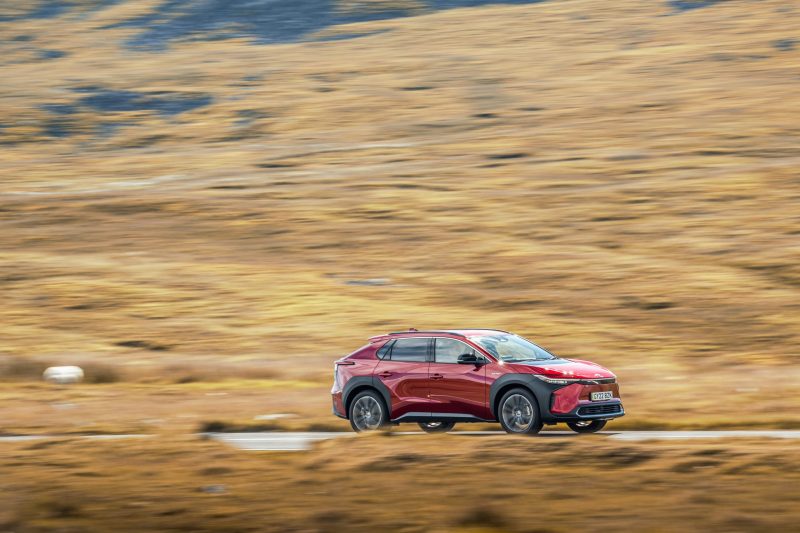
Out on the road, the Toyota doesn’t do anything special. In fact, the bZ4X is more of a car to just do the basics of carrying people around with no frills or perks.
Driver engagement is not the car’s ethos, but at least it’s not trying to be something that it’s not. As it weighs nearly two tonnes it feels heavy when behind the wheel, and while the steering is adequate enough, its numb feel and lack of communication don’t inspire confidence around the twisty bits of road.
At higher speeds, there is a lot of wind and road noise that enters the cabin and the visibility out of the back isn’t great due to the thick rear pillars and the lack of a rear windscreen wiper which makes it especially hard to see out of when the rear hatch is covered in rainwater.
On a more positive note, our test car has been achieving an impressive 5.3 miles per kilowatt and the ride isn’t too uncomfortable, which makes the car more relaxing over longer distances. However, rivals like the Renault Scenic E-Tech do drive better and are better sound insulated.
How does it look?

At first glance, the bZ4X looks just like its twin sister, the Solterra. Its plastic wheel arches and swooping back window make it look bold and different, to say the least.
The smoothed-off front grille and LED headlights make the car look modern and clean without being too brash and offensive. However, our test car’s Dark blue paintwork is a little conservative.
What’s it like inside?
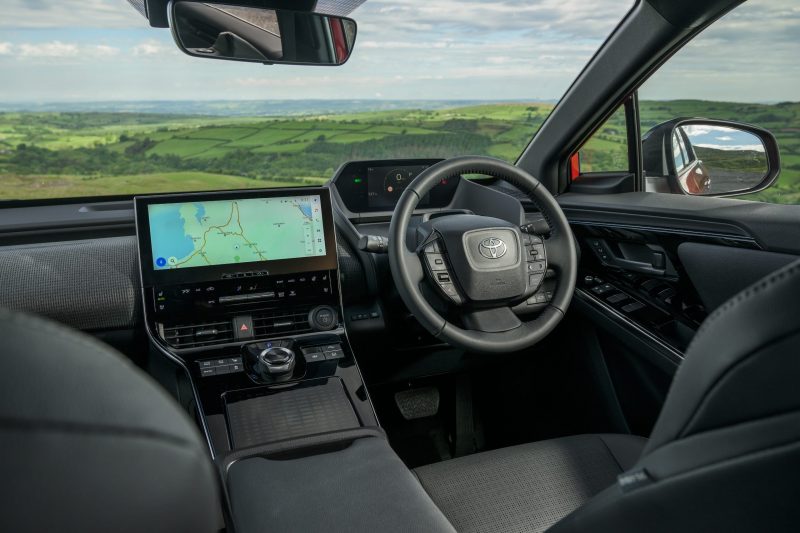
The first thing that captures your eye is the aeronautical-styled instrument binnacle, which looks great on the face of it, but depending on your height and seat position, it can be obscured by the steering wheel.
Materials used throughout the interior let the bZ4X down by being cheap and nasty to the touch, and don’t reflect in the £43,000 asking price either.
Storage throughout is good, but what is particularly odd is that there is no glove compartment. Instead, it’s replaced by a large cut-out located under the centre console which means that all your personal belongings will be on show. Large door bins and a very deep storage bin located under the centre armrest though make up for this.
However, step in the back and things improve. The space is vast with tonnes of leg and knee room and an almost flat floor makes it easier for three to sit abreast in the back – it’s just a shame that you can’t slide your feet underneath the front seats to really stretch out, but there’s no denying it’s one of the best in class for rear seat passengers.
Boot space is decent enough at 452 litres, but it trails behind rivals such as the Skoda Enyaq’s 585 litres. Thankfully, there is virtually no load lip and the Toyota’s rear seats fold almost completely flat which makes it a doodle to slide those longer items to the back and the space itself is very square-shaped and usable, too.
What’s the spec like?
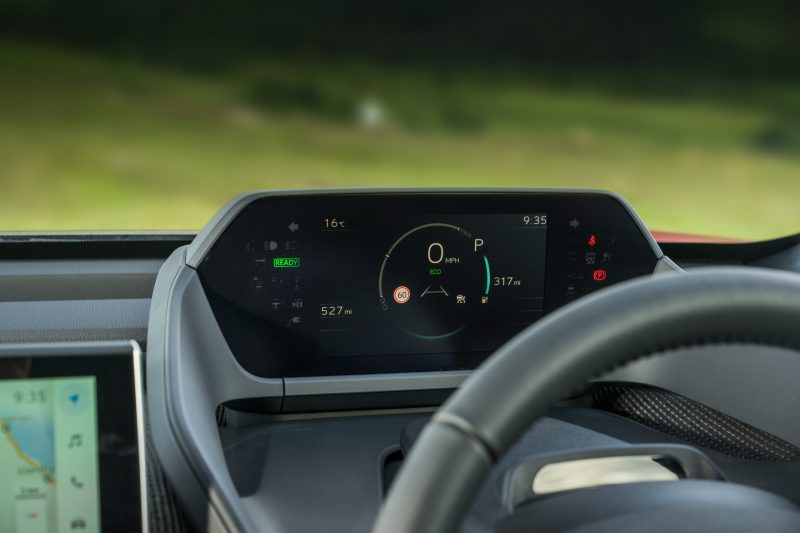
You can get the bZ4X in three flavours, Pure, Motion and Vision – and no matter what version you opt for, they’re all well-equipped.
Our test car is the entry-level, front-wheel-drive Pure model and is priced at £42,860. It comes as standard with an efficiency-boosting heat pump, Apple CarPlay and Android Auto, LED headlights, keyless entry and start as well as 18-inch alloy wheels.
The flagship Vision comes in at £48,810 and features 20-inch alloy wheels, blind-spot monitoring and a 12.3-inch infotainment screen.
Both mid-spec and top-spec models are available with an all-wheel-drive option as well.
Verdict
Toyota may be late to the party with its BEVs but it’s certainly not with its electrified powertrains.
The bZ4X is one of those cars that doesn’t stand out in any particular area, but it does the job as a car and it doesn’t pretend or try to be something that it’s not. There are rivals that have a more engaging driving experience, have a higher quality feeling interior and look prettier.
However, the Toyota’s excellent interior space and usable boot mean it’s one of the more practical electric SUVs on the market, and with a standard heat pump and a decent electric range of nearly 300 miles on a single charge, that could easily tempt buyers away from its European rivals.
Facts at a glance
- Model as tested: Toyota bZ4X Pure
- Price as tested: £43,540
- Engine: 71.4kWh battery
- Power: 207bhp
- Torque: 266Nm
- Top speed: 99mph
- 0-60mph: 7.3 seconds
- MPG: N/A
- CO2 emissions: N/A
- Electric range: 270 miles
- Charging speed: 150kW
By Cameron Richards

